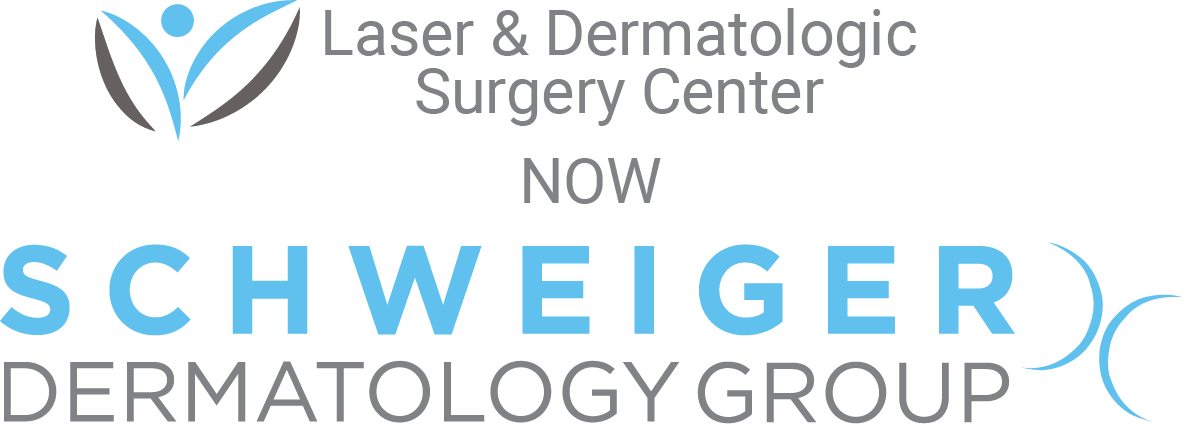What is Q-switched laser tattoo removal™?
The Q-switched laser tattoo removal procedure is one of our specialties here at Laser & Dermatologic Surgery Center in St. Louis, MO. A Q-switched laser™ generates very bright and extremely short pulses of light that very precisely and rapidly heat and break up tattoo ink particles. These broken up particles are then gradually removed by the body’s scavenger cells from the area. The process has to be repeated multiple times as each treatment achieves only partial fading of the tattoo. Learn more about what to expect.
What tattoos respond to laser treatment?
Almost all tattoos can be faded to at least some degree with the laser. “Homemade” blue-black tattoos require the least number of treatments for maximal fading while multicolored professional tattoos require many more treatments. Tattoos with multiple colors may need more than one laser for effective fading. Some colors, especially the new very vivid colors, do not fade at all.
Black cosmetic facial tattoos can be faded with very few treatments. Traumatic tattoos also respond very readily to laser treatment.
What tattoos should not be treated?
Skin colored, rust colored, and some white tattoos will turn immediately and irreversibly pitch black when exposed to Q-switched laser light™. Additional laser treatment can sometimes fade the black color, but often the black color remains in spite of multiple laser treatments.
Some patients develop an allergic reaction in their tattoo. This reaction most often happens with red tattoos. Q-switched laser treatment™ should not be done as it can cause a systemic allergic reaction
Tattoos that are less than one year old seem to be less responsive to treatment. We recommend waiting one year after a tattoo has been placed before starting Q-switched laser treatments™.
These tattoos can be treated but with a different laser system.
What will happen during the tattoo removal treatment?
The procedure is usually done without any anesthetic. The laser feels like very rapid pinpricks or heat.
However, we can prescribe a topical anesthetic that is applied 2 hours before the laser treatment to reduce the degree of discomfort during treatment.
What will happen after treatment?
A scab that heals over several days will form. Occasionally, blisters may form as well. Other than the initial dressing, minimal wound care is needed. The tattoos should be protected from the sun during healing and for several weeks before the next treatment.
The tattoo will fade gradually over several months. Treatments are spaced at least 2 months apart. The degree of fading is most dramatic during the first few laser treatments
What are possible side effects of tattoo removal?
Because the laser is so specific in removing only the tattoo particles without damaging the surrounding normal skin, scarring is rarely seen.
Occasionally the treated skin may develop a brownish discoloration especially if the area is exposed to the sun soon after treatment.
In some patients, the treated area may appear lighter than normal skin. This occurs more often as the number of treatments of a given tattoo increases. A white “ghost” free of tattoo ink may remain.
The most common problem is that complete fading of the tattoo may not always be possible no matter how many treatments have been done. The number of treatments needed for maximal fading depends on the tattoo ink colors, the age of the tattoo and location of the tattoo on the body.
To minimize the risk of complications, it is important to follow all preoperative and postoperative wound care instructions completely.
How much will it cost?
The cost of laser treatment of tattoos varies from a couple of hundred to several hundred dollars per treatment depending on the size of the area being treated. You will be given a written estimate of the cost after your laser tattoo removal consultation.
WOUND CARE
Pre-Laser Preparation
- Avoid having a tan on the tattoo before treatment
- Avoid Aspirin-containing products for 2 weeks before treatment
- If a topical anesthetic was prescribed:
Apply a thick coat of the topical anesthetic over the tattoo and cover with plastic wrap for 2 hours before your appointment. Leave the plastic wrap in placed until it has been removed by the nurse just before the procedure.
Post-Laser Wound care
- Leave dressing in place and keep area dry for 24 hours
- Additional dressings are usually not required. However, if significant Scabbing, blistering, or dryness has developed, apply Aquaphor ointment or petroleum once a day and cover with a non-stick pad until resolved.
- Avoid sun exposure to the treated area until healing is complete.
For emergencies at night or during the weekend, call (314) 878-3839, leave a message and the doctor will contact you shortly after that.


